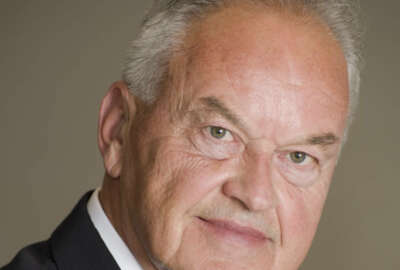
Let’s talk about veteran preference
Veteran preference is in the news again, with new legislation proposing new limits. Former Homeland Security Chief Human Capital Officer Jeff Neal says that's a...
This column was originally published on Jeff Neal’s blog, ChiefHRO.com, and was republished here with permission from the author.
Veteran preference is in the news again and again. The 2017 Defense Authorization Act recently passed by the Senate includes a provision that places some limits on veteran preference. Specifically, it limits preference for hiring to the first permanent job and eliminates the “double dipping” by veterans who get federal jobs and then repeatedly use veteran preference to apply for other jobs. That is a big deal — veteran preference is a kind of third rail of civil service reform — and efforts to limit it rarely succeed. To understand veteran preference better, we need to step back and take a look at what it is and is not, what has happened in the past, and where it might go from here. Fair warning: this is a long post. The subject is complex and contentious and it takes more than a few words to do it justice.

Veteran preference has been a matter of public policy from the early days of our republic. President George Washington recognized the obligations that the nation has to the men and women who fight our wars.
“The willingness with which our young people are likely to serve in any war, no matter how justified, shall be directly proportional to how they perceive veterans of early wars were treated and appreciated by our nation.”— George Washington
Veteran preference became a matter of law in March 1865 and has been a key component of the civil service ever since. It has been revised and strengthened over the years. The current law and regulations on veteran preference are in 5 USC 2108 and 5 CFR 211. A good summary is on the FedsHireVets site. The law does not make everyone who served in the military eligible for preference. Here is the exact language:
§2108. Veteran; disabled veteran; preference eligible
For the purpose of this title —
(1) “veteran” means an individual who —
(A) served on active duty in the armed forces during a war, in a campaign or expedition for which a campaign badge has been authorized, or during the period beginning April 28, 1952, and ending July 1, 1955;
(B) served on active duty as defined by section 101(21) of title 38 at any time in the armed forces for a period of more than 180 consecutive days any part of which occurred after January 31, 1955, and before October 15, 1976, not including service under section 12103(d) of title 10 pursuant to an enlistment in the Army National Guard or the Air National Guard or as a Reserve for service in the Army Reserve, Navy Reserve, Air Force Reserve, Marine Corps Reserve, or Coast Guard Reserve;
(C) served on active duty as defined by section 101(21) of title 38 in the armed forces during the period beginning on August 2, 1990, and ending on January 2, 1992; or
(D) served on active duty as defined by section 101(21) of title 38 at any time in the armed forces for a period of more than 180 consecutive days any part of which occurred during the period beginning on September 11, 2001, and ending on the date prescribed by Presidential proclamation or by law as the last date of Operation Iraqi Freedom; and, except as provided under section 2108a, who has been discharged or released from active duty in the armed forces under honorable conditions;
(2) “disabled veteran” means an individual who has served on active duty in the armed forces, (except as provided under section 2108a) has been separated therefrom under honorable conditions, and has established the present existence of a service-connected disability or is receiving compensation, disability retirement benefits, or pension because of a public statute administered by the Department of Veterans Affairs or a military department;
(3) “preference eligible” means, except as provided in paragraph (4) of this section or section 2108a(c) —
(A) a veteran as defined by paragraph (1)(A) of this section;
(B) a veteran as defined by paragraph (1)(B), (C), or (D) of this section;
(C) a disabled veteran;
(D) the unmarried widow or widower of a veteran as defined by paragraph (1)(A) of this section;
(E) the wife or husband of a service-connected disabled veteran if the veteran has been unable to qualify for any appointment in the civil service or in the government of the District of Columbia;
(F) the mother of an individual who lost his life under honorable conditions while serving in the armed forces during a period named by paragraph (1)(A) of this section, if—
(i) her husband is totally and permanently disabled;
(ii) she is widowed, divorced, or separated from the father and has not remarried; or
(iii) she has remarried but is widowed, divorced, or legally separated from her husband when preference is claimed;
(G) the mother of a service-connected permanently and totally disabled veteran, if—
(i) her husband is totally and permanently disabled;
(ii) she is widowed, divorced, or separated from the father and has not remarried; or
(iii) she has remarried but is widowed, divorced, or legally separated from her husband when preference is claimed; an
(H) a veteran who was discharged or released from a period of active duty by reason of a sole survivorship discharge (as that term is defined in section 1174(i) of title 10); but does not include applicants for, or members of, the Senior Executive Service, the Defense Intelligence Senior Executive Service, the Senior Cryptologic Executive Service, or the Federal Bureau of Investigation and Drug Enforcement Administration Senior Executive Service;
(4) except for the purposes of chapters 43 and 75 of this title, “preference eligible” does not include a retired member of the armed forces unless —
(A) the individual is a disabled veteran; or
(B) the individual retired below the rank of major or its equivalent; a
(5) “retired member of the armed forces” means a member or former member of the armed forces who is entitled, under statute, to retired, retirement, or retainer pay on account of service as a member.
Discussions of veteran preference are a lot like talking about politics or religion. Opinions tend to be strongly held, to say the least. Proponents argue that preference is a small price to pay for people who were willing to fight and die for America. Opponents argue it is a practice that is abused by some and places prior military service above qualifications in hiring. There are lots of positions and arguments in between.
Before we get into the proposed change, rather than using anecdotal evidence, let’s take a look at data released by the Bureau of Labor Statistics in March 2016. Here are a few key data points to consider:
- The U.S. has 21.2 million veterans.
- The veteran population is actually much smaller now than in 1980, when it was 28.5 million.
- 4.3 million veterans have a service-connected disability.
- In August 2015, 36 percent of employed veterans with a disability worked in federal, state or local government, compared with 20 percent of veterans with no disability and 13 percent of non-veterans.
- Among the employed, 25 percent of veterans with a disability worked for the federal government, compared with 7 percent of veterans with no disability and 2 percent of non-veterans.
- Among veterans who served during Gulf War era II, about 1 in 3 (1.2 million) reported having a service-connected disability.
- The unemployment rate of veterans ages 18 – 24 is 13 percent, compared to 10.9 percent in the overall population.
It is safe to say that, as a matter of public policy, the basic idea of veteran preference is not going anywhere. It may be altered, curtailed or expanded, but it is not going away. Every time there is a protracted period of peace, the idea of eliminating veteran preference comes up. When the Civil Service Reform Act of 1978 was being debated, the Carter White House argued that veteran preference for hiring should be limited to 10 years following completion of military service, and preference for reduction in force should be limited to 3 years. What passed was a mix of scaled back preference eligibility based on rank, generally limiting preference to those who did not retire at the rank of major or lieutenant commander or above. At the same time, the “super veteran” with a 30 percent or higher service-connected disability was introduced. The net effect was that the effort to limit veteran preference resulted in what many would consider to be even stronger preference.
The Senate proposal is different. It comes at a time when our military is still engaged in significant operations. Changes in hiring practices (category ranking and the end of the Federal Career Intern Program) in recent years, combined with Operation Enduring Freedom and Operation Iraqi Freedom producing large numbers of veterans (many with service-connected disabilities), have resulted in the number of new hires that are veterans reaching historic levels. The Washington Post quotes OPM as saying that more than 47 percent of permanent new hires in 2014 were veterans. Federal leaders are saying they have many job categories where they might as well put up signs that say “non-veterans need not apply.” One Chief Human Capital Officer who did not want to be quoted by name told me the organization is finding much higher turnover among newly hired veterans when compared to non-vets, resulting in more churn and delays in hiring.
Needless to say, the Senate bill is generating controversy. As the Post reports, the American Legion is actively lobbying to quash the proposal. Other Veteran Service Organizations may weigh in with similar sentiments (or not?).
So what would this bill actually do? I have read opinions that say the bill eliminates veteran preference for RIF, or affects only veterans and tilts the playing field back toward non-veterans. Neither of those is accurate. The bill does not affect preference for RIF. It does not amend the law on preference in 5USC 2108, rather it amends the law on how preference is applied in hiring (found in 5 USC 3309).
So, is this a good change to make? Before we can answer that question, there are a few additional questions we should try to answer first.
- Is there a number of veterans in the civil service that is “too many?” If so, how would we arrive at that number? The answer is yes, but not just for veterans. Too many of any one category of employee is a problem. A workforce that is all men, all women, all white, all minority, all veteran, all non-veteran, or all anything limits an organization and its ability to function effectively. Without wading too far into the topic of diversity, there is simply too much research that shows the negative effects of overly homogeneous groups.
- Do we know what that number is? No.
- Should veteran preference last forever, or for a set amount of time after completing service? The answer depends on who you ask and which veterans you are asking about. Let’s say I ask the generic question – I believe large numbers of people would say no. However, let’s say I ask about a particular veteran – say someone who fought in Iraq, Afghanistan, Vietnam, or elsewhere, and who has a disability that is not only service-connected, it is the direct result of a combat injury or PTSD? Now how do we answer the question? My guess is we would find far more folks in favor of lifetime preference for that veteran.
- Should we make a distinction between veterans with service-connected disabilities and other vets? This one is hard to answer. Most of our society, learning from the mistakes regarding how returning Vietnam veterans were treated, recognizes the tremendous sacrifices all of our military face. If we look a recent history, the reliance on the Guard and Reserve grew to unprecedented levels and many of our military served multiple tours in combat. I believe the best answer on this one is to look at the percentage of veterans with service-connected disabilities who are employed in government. The BLS numbers show that one in four such veterans are employed by the federal government and 36 percent of such veterans are employed by government at the state, local or federal level. This subject needs more research to determine whether the cause of that is veteran preference (remember — veterans with a compensable disability float to the top of every list), or that disabled veterans have more difficulty finding jobs outside of government. Until we know the answer, we should be cautious about making changes that would harm the employment opportunities for disabled veterans. Getting back to the basic question, I believe we should honor the contributions of every veteran, and pay particular attention to those who have a service-connected disability.
- Would eliminating the exercise of veteran preference by current employees increase opportunities for other veterans? Maybe. The impact on veterans could be mixed. A veteran who has used his/her preference to get a permanent job would not be able to use it again. That means they would not get extra points or be placed ahead of non-vets for any other jobs. Those veterans would most likely view the outcome as harmful. Other veterans who might show up on the same referral certificate would most likely view the outcome as beneficial. The number of veterans they are competing against is reduced while their preference remains intact and unchanged. The only time this change would actually benefit a non-veteran is when the veteran(s) who no longer get preference are the only veterans who apply and are ranked similarly to the non-vet.
- At what point does veteran preference make it difficult for agencies to recruit? In many respects, “I’ll know it when I see it” is the best answer we have right now, and some agency leaders, including those in the Department of Defense, believe they are seeing it now.
The public policy benefits of veteran preference are obvious in an all-volunteer military. It provides an incentive for recruiting and a means of reintegrating service members following their time in uniform. It also sends the message that President Washington wanted to send about how we treat the veterans of our wars.
More commentary

Performance appraisals or fairy tales?
With these questions and answers in mind, my view is that the bill could be improved. It limits preference by restricting it to a single use. Virtually any study of new hires in government or the private sector shows that turnover in the first two years with an organization is much higher than in following years. A Partnership for Public Service study showed that turnover for employees under 30 was also high, as is turnover for employees in entry-level jobs. This approach to veteran preference could have an adverse impact on veterans who get a job and learn that it is not a good match for them, or those who need to relocate (e.g., to accompany a spouse). The effect could be particularly pronounced for younger veterans who are still searching for the right career. Young veterans have higher unemployment rates than the population as a whole. It is not in our society’s interests for those young men and women to serve and then have no job when they complete their service.
If the intent is to reduce or eliminate double dipping (or infinite dipping), the better approach would be to restrict veteran preference for permanent positions to applicants who are not already in permanent positions. That would mean a veteran could use his/her preference any time s/he needs a job, but not while already in a permanent job. That approach does not punish the veteran who finds s/he accepted a job that isn’t working out, or who needs to relocate and must look for another job. The net effect this type of change would have on veteran hiring is likely to be minimal, but it is possible that some veterans who would have lost out to another veteran who is already in government will find their chances are improved.
Whatever changes are made to veteran preference, they should be accompanied by a requirement to study the impact on disabled veterans and report back to Congress and the White House. If any changes result in higher unemployment for disabled veterans, they should be amended.
One last point to consider, some part of the current problem agencies are experiencing is caused by how they have implemented category ranking and not by veteran preference itself. OPM’s regulations on category ranking give agencies broad authority to implement it. Some have done it effectively, others have not. If category ranking is implemented badly, it results in veterans blocking highly qualified non-veterans far too often. I will address that subject in much more detail in an upcoming post.
Although I usually side with the folks who believe OPM should give agencies as much authority as possible, in this case I think the right answer is for OPM to tighten up the rules to help agencies get better results with category ranking, and for agencies to ensure their HR staff know how to run the hiring process. In addition to helping agencies get the best possible talent, it might take some of the pressure off the subject of veteran preference
Jeff Neal is a senior vice president for ICF International and founder of the blog, ChiefHRO.com. Before coming to ICF, Neal was the chief human capital officer at the Department of Homeland Security and the chief human resources officer at the Defense Logistics Agency.
Copyright © 2024 Federal News Network. All rights reserved. This website is not intended for users located within the European Economic Area.




